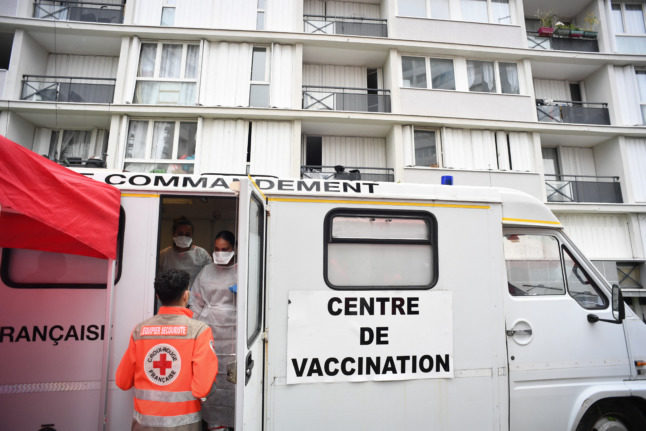Record numbers of people booked vaccine appointments following Macron’s announcements on July 12th, leading the Pasteur Institute to revise its projections.
With the current vaccination rhythm, researchers now expect 2,500 hospitalisations per day, which is half of what they had anticipated in their projections three weeks ago. And if the infection rate – the number of people getting infected by one person – decreases from 2 to 1.8, daily admissions in hospitals would drop to 1,800, according to projections published on Monday.
On July 9th, a scenario published by the Pasteur Institute anticipated 4,800 new admissions per day at hospitals at the height of the fourth wave, a significant increase compared to the 3,600 daily hospitalisations during the first wave last spring.
After President Macron announced the expansion of the health passport – requiring proof of full vaccination or a negative test – to venues that would include cinemas, restaurants and trains, the French rushed to get vaccinated.
Last weekend, France’s parliament voted to make vaccine passports a key part of daily life in the battle against Covid-19. The text is currently being reviewed by the French Constitutional Council before it turns into law.
READ ALSO Will France’s fourth wave of Covid really ‘ruin’ the summer holidays?
In the meantime, more and more French people are getting a jab. Over the past two weeks, four million people in France received vaccines, with almost 60 percent of the population now partly or fully vaccinated.
“The acceleration of vaccination combined with a decrease, even small, in the infection rate could have a significant impact on the size of the fourth wave,” the Pasteur experts said in their report.
During the week of July 16th to 22nd, approximately 684,000 doses were injected per day. In the weeks before the Pasteur Institute published its first report, less than 500,000 daily doses were given.
However, these projections will only prove accurate if vaccination is combined with other health measures, according to the Pasteur Institute researchers.
READ ALSO France set to enforce Covid health pass in bars, restaurants and trains from August 9th
“It is essential that the acceleration of the vaccination campaign continues with a massive compliance of the population and that the transmission rates decrease in the general population, thanks to the maintaining of social distancing measures, the wearing of a mask and the health pass,” the researchers said in their report.
The peak of Covid-19 cases is anticipated for September in most of the scenarios studied by the Pasteur Institute, with “pressure on hospitals that could become significant as soon as August in the least favourable scenarios,” the experts said in their report.
Nonetheless, the researchers remain cautious regarding these new projections. “The spread of Covid-19 is difficult to anticipate and the dynamic of the epidemic can change rapidly,” they said.
“In the past we have seen a slowing down and an acceleration of the epidemic without being able to explain them,” Institute Pasteur researcher Simon Cauchemez told Le Monde. “There’s the virus, but there are also adjustments to people’s behaviour, which are independent from the measures taken by the authorities.”




 Please whitelist us to continue reading.
Please whitelist us to continue reading.
Member comments